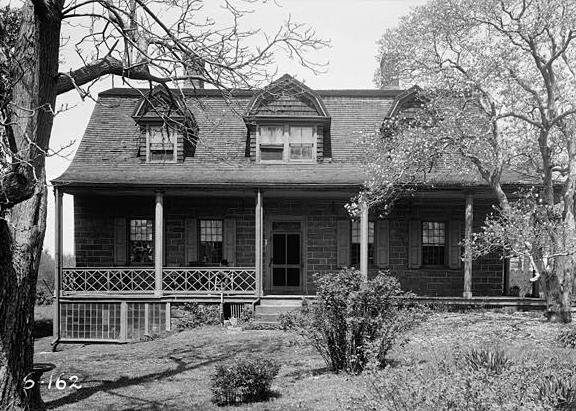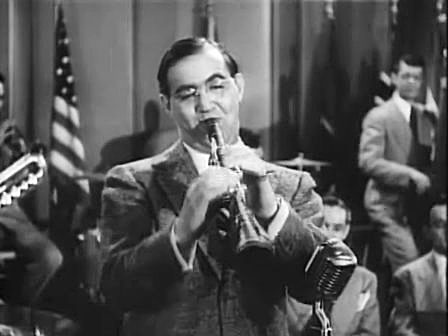|
Slam Stewart
Leroy Eliot "Slam" Stewart (September 21, 1914December 10, 1987) was an American jazz double-bass player whose trademark style was his ability to bow the bass (arco) and simultaneously hum or sing an octave higher. He was a violinist before switching to bass at the age of 20. Biography Stewart was born in Englewood, New Jersey, United States and began playing string bass while attending Dwight Morrow High School. While attending the Boston Conservatory, he heard Ray Perry singing along with his violin. This gave him the inspiration to follow suit with his bass. In 1937, Stewart teamed with Slim Gaillard Bulee "Slim" Gaillard (January 9, 1911 – February 26, 1991), also known as McVouty, was an American jazz singer and songwriter who played piano, guitar, vibraphone, and tenor saxophone. Gaillard was noted for his comedic vocalese singing ... to form the novelty jazz act Slim and Slam. The duo's biggest hit was "Flat Foot Floogie (with a Floy Floy)" in 1938. Stewar ... [...More Info...] [...Related Items...] OR: [Wikipedia] [Google] [Baidu] |
Englewood, New Jersey
Englewood is a city in Bergen County, in the U.S. state of New Jersey. Englewood was incorporated as a city by an act of the New Jersey Legislature on March 17, 1899, from portions of Ridgefield Township and the remaining portions of Englewood Township.Snyder, John P''The Story of New Jersey's Civil Boundaries: 1606-1968'', Bureau of Geology and Topography; Trenton, New Jersey; 1969. p. 77. Accessed February 14, 2012. As of the 2020 United States census, the city's population was 29,308, its highest decennial count ever and an increase of 2,161 (+8.0%) from the 2010 census count of 27,147, which in turn reflected an increase of 944 (+3.6%) from the 26,203 counted in the 2000 census. History Etymology Englewood Township, the city's predecessor, is believed to have been named in 1859 for the Engle family. The community had been called the " English Neighborhood", as the first primarily English-speaking settlement on the New Jersey side of the Hudson River after New Net ... [...More Info...] [...Related Items...] OR: [Wikipedia] [Google] [Baidu] |
Coleman Hawkins
Coleman Randolph Hawkins (November 21, 1904 – May 19, 1969), nicknamed "Hawk" and sometimes "Bean", was an American jazz tenor saxophonist.Yanow, Scot"Coleman Hawkins: Artist Biography" AllMusic. Retrieved December 27, 2013. One of the first prominent jazz musicians on his instrument, as Joachim-Ernst Berendt, Joachim E. Berendt explained: "There were some tenor players before him, but the instrument was not an acknowledged jazz horn". Hawkins biographer John Chilton described the prevalent styles of tenor saxophone solos prior to Hawkins as "mooing" and "rubbery belches". Hawkins denied being first and noted his contemporaries Happy Caldwell, Stump Evans, and Prince Robinson, although he was the first to tailor his method of Jazz improvisation, improvisation to the saxophone rather than imitate the techniques of the clarinet. Hawkins' virtuosic, arpeggiated approach to improvisation, with his characteristic rich, emotional, and vibrato-laden tonal style, was the main influen ... [...More Info...] [...Related Items...] OR: [Wikipedia] [Google] [Baidu] |
Binghamton University
The State University of New York at Binghamton (Binghamton University or SUNY Binghamton) is a public university, public research university in Binghamton metropolitan area, Greater Binghamton, New York, United States. It is one of the four university centers in the State University of New York (SUNY) system. Since its establishment in 1946, the school has evolved from a small Liberal arts colleges in the United States, liberal arts college to a large research university. It is Carnegie Classification of Institutions of Higher Education, classified among List of research universities in the United States, R1: Doctoral Universities – Very high research activity. Binghamton's athletic teams are the Binghamton Bearcats, Bearcats and they compete in NCAA Division I, Division I of the National Collegiate Athletic Association (NCAA). The Bearcats are members of the America East Conference. History Establishment Binghamton University was established in 1946 in Endicott, New York, ... [...More Info...] [...Related Items...] OR: [Wikipedia] [Google] [Baidu] |
Dizzy Atmosphere
''Dizzy Atmosphere'' is a jazz standard by Dizzy Gillespie originally recorded in 1945 with Charlie Parker. Harmonically, it is based on the chord progression found in George Gershwin's I Got Rhythm, or "rhythm changes The Rhythm changes is a common 32-Bar (music), bar jazz chord progression derived from George Gershwin's "I Got Rhythm". The progression is in Thirty-two-bar form, AABA form, with each A section based on repetitions of the ubiquitous I–vi–ii� ..." as referred to in jazz. References {{1940s-jazz-composition-stub 1945 compositions 1940s jazz standards Compositions by Dizzy Gillespie ... [...More Info...] [...Related Items...] OR: [Wikipedia] [Google] [Baidu] |
Groovin' High
"Groovin' High" is an influential 1945 song by jazz composer and trumpeter Dizzy Gillespie. The song was a bebop mainstay that became a jazz standard, one of Gillespie's best known hits, and according to ''Bebop: The Music and Its Players'' author Thomas Owens, "the first famous bebop recording". The song is a complex musical arrangement based on the chord structure of the 1920 standard originally recorded by Paul Whiteman, "Whispering", with lyrics by John Schonberger and Richard Coburn ''(né'' Frank Reginald DeLong; 1886–1952) and music by Vincent Rose. The biography ''Dizzy'' characterizes the song as "a pleasant medium-tempo tune" that "demonstrates... illespie's/nowiki> skill in fashioning interesting textures using only six instruments". The song has been used to title many compilation albums and also the 2001 biography ''Groovin' High: The Life of Dizzy Gillespie''. Impact The track appeared on the debut 1947 album, ''Dizzy Gillespie and His All Stars'', the song is on ... [...More Info...] [...Related Items...] OR: [Wikipedia] [Google] [Baidu] |
Bebop
Bebop or bop is a style of jazz developed in the early to mid-1940s in the United States. The style features compositions characterized by a fast tempo (usually exceeding 200 bpm), complex chord progressions with rapid chord changes and numerous Modulation (music), changes of key, instrumental virtuosity, and Jazz improvisation, improvisation based on a combination of harmonic structure, the use of scales, and occasional references to the melody. Bebop developed as the younger generation of jazz musicians expanded the creative possibilities of jazz beyond the popular, dance-oriented swing music-style to a new "musician's music" that was not as danceable and demanded close listening.Lott, Eric. Double V, Double-Time: Bebop's Politics of Style. Callaloo, No. 36 (Summer, 1988), pp. 597–605 As bebop was not intended for dancing, it enabled the musicians to play at faster tempos. Bebop musicians explored advanced harmonies, complex syncopation, altered chords, extended chords, cho ... [...More Info...] [...Related Items...] OR: [Wikipedia] [Google] [Baidu] |
Charlie Parker
Charles Parker Jr. (August 29, 1920 – March 12, 1955), nicknamed "Bird" or "Yardbird", was an American jazz Saxophone, saxophonist, bandleader, and composer. Parker was a highly influential soloist and leading figure in the development of bebop, a form of jazz characterized by fast tempos, Virtuoso, virtuosic technique, and advanced harmonies. He was a virtuoso and introduced revolutionary rhythmic and harmonic ideas into jazz, including rapid Passing chord, passing chords, new variants of Altered chord, altered chords, and Chord substitution, chord substitutions. Parker was primarily a player of the alto saxophone. Parker was an icon for the hipster (1940s subculture), hipster subculture and later the Beat Generation, personifying the jazz musician as an uncompromising artist and intellectual rather than just an entertainer. Early life Charles Parker Jr. was born in Kansas City, Kansas, to Charles Parker Sr. and Adelaide "Addie" Bailey, who was of mixed Choctaw and African-A ... [...More Info...] [...Related Items...] OR: [Wikipedia] [Google] [Baidu] |
Dizzy Gillespie
John Birks "Dizzy" Gillespie ( ; October 21, 1917 – January 6, 1993) was an American jazz trumpeter, bandleader, composer, educator and singer. He was a trumpet virtuoso and improvisation, improviser, building on the virtuosic style of Roy Eldridge but adding layers of Harmony, harmonic and rhythmic complexity previously unheard in jazz. His combination of musicianship, showmanship, and wit made him a leading popularizer of the new music called bebop. His beret and horn-rimmed spectacles, scat singing, bent horn, pouched cheeks, and light-hearted personality have made him an enduring icon. In the 1940s, Gillespie, with Charlie Parker, became a major figure in the development of bebop and modern jazz. He taught and influenced many other musicians, including trumpeters Miles Davis, Jon Faddis, Fats Navarro, Clifford Brown, Arturo Sandoval, Lee Morgan, Chuck Mangione, and balladeer Johnny Hartman. He pioneered Afro-Cuban jazz and won several Grammy Awards. Scott Yanow wrote: "Di ... [...More Info...] [...Related Items...] OR: [Wikipedia] [Google] [Baidu] |
Beryl Booker
Beryl Booker (June 7, 1922 – September 30, 1978) was an American swing pianist. She was born in Philadelphia. Career Booker performed with Slam Stewart's trio in 1946, and played intermittently with him until 1951. She was Dinah Washington accompanist for a period. In 1951, she became part of the newly formed Austin Powell Quintet (consisting of former Cats and the Fiddle members Doris Knighton, Johnny Davis and Stanley Gaines, and also Dottie Smith) which recorded one Decca single entitled "All This Can't Be True" before disbanding. Beginning her own combo In early 1952, Booker led a quintet which played Birdland, featuring Don Elliot, Chuck Wayne, Clyde Lombardi and Connie Kay. Recordings with Miles Davis sitting in on the group have been preserved.Schenker, Anatol. Chronological Classics: 1946-1952. Liner Notes In 1953, she formed her own trio with Bonnie Wetzel and Elaine Leighton (de) (nl) (1926–1912). This group toured Europe in 1954 as part of a show entitled " ... [...More Info...] [...Related Items...] OR: [Wikipedia] [Google] [Baidu] |
Benny Goodman
Benjamin David Goodman (May 30, 1909 – June 13, 1986) was an American clarinetist and bandleader, known as the "King of Swing". His orchestra did well commercially. From 1936 until the mid-1940s, Goodman led one of the most popular swing big bands in the United States. His concert at Carnegie Hall in New York City on January 16, 1938, is described by critic Bruce Eder as "the single most important jazz or popular music concert in history: jazz's 'coming out' party to the world of 'respectable' music." Goodman's bands started the careers of many jazz musicians. During an era of racial segregation, he led one of the first integrated jazz groups, his trio and quartet. He continued performing until the end of his life while pursuing an interest in classical music. Early years Goodman was the ninth of twelve children born to poor Jewish emigrants from the Russian Empire. His father, David Goodman, came to the United States in 1892 from Warsaw in partitioned Poland and becam ... [...More Info...] [...Related Items...] OR: [Wikipedia] [Google] [Baidu] |
Don Byas
Carlos Wesley "Don" Byas (October 21, 1912 – August 24, 1972) was an American jazz tenor saxophonist, associated with swing and bebop. He played with Count Basie, Duke Ellington, Art Blakey, and Dizzy Gillespie, among others, and also led his own band. He lived in Europe for the last 26 years of his life. Biography Oklahoma and Los Angeles Byas was born in Muskogee, Oklahoma, United States. Both of Byas' parents were musicians. His mother played the piano, and his father, the clarinet. Byas began his musical education in the European classical tradition, learning to play violin, clarinet and alto saxophone, which he played until the end of the 1920s. Benny Carter, who played many instruments, was his idol at this time. Byas started to perform in local orchestras at the age of 17, with Bennie Moten, Terrence Holder and Walter Page. He founded and led his own college band, Don Carlos and His Collegiate Ramblers, during 1931–1932, at Langston College, Oklahoma. By ... [...More Info...] [...Related Items...] OR: [Wikipedia] [Google] [Baidu] |
Red Norvo
Red Norvo (born Kenneth Norville; March 31, 1908 – April 6, 1999) was an American musician, one of jazz's early vibraphonists, known as "Mr. Swing". He helped establish the xylophone, marimba, and vibraphone as jazz instruments. His recordings included "Dance of the Octopus", "Bughouse", "Knockin' on Wood", "Congo Blues", and "Hole in the Wall". Career Red Norvo was born in Beardstown, Illinois, United States. His career began in Chicago with a band called The Collegians in 1925. He played with many other bands, including an all-marimba band on the vaudeville circuit, and the bands of Paul Whiteman, Benny Goodman, Charlie Barnet, and Woody Herman. He recorded with Mildred Bailey (his wife from 1933 to 1942), Billie Holiday, Dinah Shore and Frank Sinatra. Norvo and his wife were known as "Mr. and Mrs. Swing." He appeared as himself in the film '' Screaming Mimi'' (1958) and in '' Ocean's 11'', accompanying Dean Martin while he sang " Ain't That a Kick in the Head?". In 1 ... [...More Info...] [...Related Items...] OR: [Wikipedia] [Google] [Baidu] |




